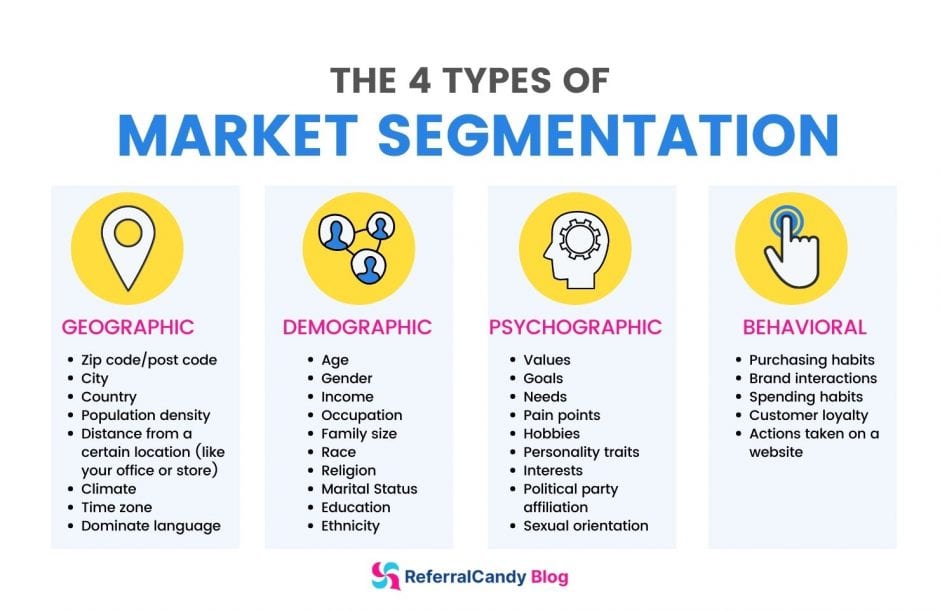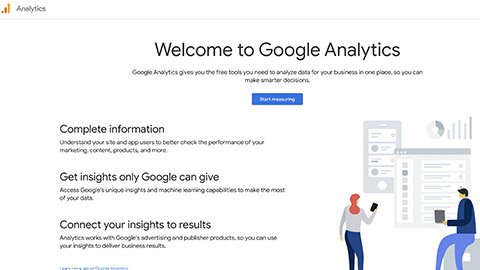You have covered a wide range of marketing preparation, activities, and trends. This next section teaches and prepares you on how to create your marketing campaign.
Watch this video
It is about encouraging tourists to come back to New Zealand after the pandemic. (1:15)
Visit the Tourism New Zealand site and read more about the market overview concerning overseas visitors, here.
Learning Activity: The Return of New Zealand
Answer the following questions in your Forum, The Return of New Zealand.
- What products, services, attractions, and activities is the video promoting? Provide an example of a New Zealand-based tourism organisation that operates them.
- What type of customers is this video targeting?
- What’s the main message that Tourism New Zealand is trying to get across?
- How many viewers have liked the video? And why is this important?
- What options are available to share the content? And why is this important?
- From what you’ve learned of marketing so far, what do you think of this video?
Market Segmentation and Customer Needs
Sounds complicated, doesn’t it? In simple terms, market segmentation is looking at a large market and grouping shared characteristics and needs into smaller markets. This helps marketers decide ‘who or what' they are targeting, meaning businesses can focus on the needs of a smaller group, with a higher chance their products will be purchased
Marketing mixes can be adjusted to fit the interests of different segments. By doing so, they provide greater value for their customers and increase profits.
There are four major types of market segmentation:

- Demographic Segmentation: This type of segmentation categorizes the market based on demographic factors such as age, gender, income, occupation, education, marital status, and family size. Demographic segmentation helps in understanding the specific characteristics and needs of different consumer groups.
For example, the market strategy for a new video game console may reveal that most users are young males with disposable income. - Psychographic Segmentation: Psychographic segmentation involves dividing the market based on lifestyle, personality traits, values, interests, attitudes, and behaviours of consumers. It helps marketers understand the motivations, preferences, and buying behaviors of individuals, allowing for targeted messaging and product positioning. For example, a coffee company might segment its customers by lifestyle and daily habits to help marketers understand their audience. They may find a segment of customers who follow an active or health-conscious lifestyle and can promote metabolism-boosting coffee products or energy drinks.
- Geographic Segmentation: Geographic segmentation divides the market based on geographic factors such as location, climate, population density, and cultural preferences. This segmentation allows marketers to tailor their marketing strategies to specific regions or areas, considering the unique characteristics and preferences of consumers in different locations. For example, customers prefer clothing from different regions or geographical areas. Weather determines the clothing of the people for example - people in warmer places wear shorts and swimsuits whereas in colder places they wear long jackets.
- Behavioural Segmentation: Behavioural segmentation is based on consumer behaviour and purchase patterns. It includes variables such as usage rate, brand loyalty, benefits sought, occasion-based buying, and decision-making processes. Behavioural segmentation helps marketers identify and target consumers based on their specific behaviours, needs, and preferences.
For example, a Smartphone user downloads and uses specific apps, either updating them or seeking similar ones.
Marketers often use buyer personas to capture their ideal customers based on the segmentation methods they use. A buyer persona brings the characteristics of an audience to life. It can capture demographics, values, goals, challenges, etc.
Market Segmentation Tools
Businesses use a variety of platforms to analyse their target market and use the results to guide how they will segment market audiences to maximise potential returns in sales.
The whole point of using these platforms is to collect data and insight about the target audience. This way, brands are able to better understand the market so that brands can run marketing campaigns that use the right message, to appeal to the right audience, at the right time.
How many times have you looked at something on the computer, and suddenly your Facebook feed has ads directly linked to what you have been searching? The pages you have started with or the ‘landing website’ will have technology embedded that tracks your activity. This is refined into different subcategories allowing the businesses that have applied these trackers to advertise the very thing/s you have been looking up!
Google Analytics
A free analytical tool that is easy to use. Google has outlined the steps needed to set this up.
A code is embedded into website pages which allows Google to collect data, identify what their market is and how to segment it.
Google Analytics can determine anything from customer location to a customer’s visit frequency.

Segment
This tool collects data from any platform and transfers it into a dashboard that can be navigated. All customer interactions are tracked. Filters can be applied which allows marketers to group/identify/build audiences and their computer habits which helps to personalise marketing campaigns.

Yandex Metrica
Like google analytics and segment, Yandex Metrica analyses characteristics of site users/visitors, collecting the data and differentiating it into segments.

The following short certificates are purely optional but extremely useful.
Complete the Google Analytics for Beginners certification. Register here at this link.
If you have time and would like to improve your skills, complete the Advanced Google Analytics certification. Register here at this link.
You can add these to your resume under the Professional Development and Training section!
Target Marketing
Target marketing makes campaigns more efficient, effective, and profitable. If you don’t market to a specific audience, then you’re really not marketing to anyone. This is one of the most basic principles of marketing, but in practice, it can be quite complex. As marketing has evolved into a digital space, segmentation, targeting, and positioning have become even more powerful and hugely influence the ‘target’ being marketed to.
How to Define and Refine Your Target Marketing
There are a few key things to think about when defining your target audience. Remember to keep it simple. You don’t need to delve deeply into demographics and behavioural research. A great starting point is your current customer database. It will give you an idea about your current customer demographics. Use knowledge about your current customers to identify similarities between them. You may even have a customer database to help you. You can also make use of monitoring and insights tools on social media channels to track your website traffic and social media audience.
- Where do your customers live?
- What age bracket do they fall into?
- Do they travel as a family, couple, groups, or solo travellers?
How do your customers book? Are they booking directly with you, through an online travel agent, or with another third party? Check your social media activity and determine what content works and leads to a strong engagement. Think of lots of likes, positive comments, and shares. You will be able to build a picture of:
- The channels that your customers use
- How they access information
- What inspires them
It is always useful to carry out regular competitor analysis. This lets you understand what others are doing in the marketplace. Understanding what your competitors are doing gives you the chance to identify gaps in the market. Use this to develop your product and messaging accordingly.
- Follow competitor social media channels to get an idea of what they are posting and how their posts are performing
- Keep an eye on other marketing such as print media, travel partners, and other digital partners
Think about your product. How do your key selling points link back to what you have identified as inspiring your target audience?
- What is unique about it?
- What do you want to tell people about it?
- What are your key selling points?
Information sourced from: VisitScotland.com
Target Marketing Strategies
There are three major types of target marketing strategies:
- Differentiated Marketing: Differentiated marketing involves targeting multiple distinct market segments with different marketing strategies. Each segment is identified based on its unique characteristics, needs, and preferences. The aim is to develop separate marketing strategies and offerings for each segment to effectively meet their specific requirements. This approach recognizes that consumers within different segments have varying preferences and purchasing behaviours, and tailors marketing efforts accordingly. Differentiated marketing requires in-depth market research and a thorough understanding of consumer segments to create targeted messages and offerings.
Examples of companies include Coca-Cola, Colgate, and M&Ms. - Concentrated Marketing: Concentrated marketing, also referred to as niche marketing, focuses on targeting a specific, well-defined segment of the market. Instead of spreading resources across multiple segments, concentrated marketing concentrates efforts and resources on a particular niche. By understanding the needs, preferences, and behaviours of the niche market, businesses can develop specialized products, services, and marketing strategies that cater specifically to that segment. This approach allows for better customization, differentiation, and a stronger market position within the targeted niche. Concentrated marketing can be particularly effective for small businesses or when there is a unique and underserved market segment.
Examples of companies include Amazon, Lush, Emirates, and Apple. - Undifferentiated Marketing: Undifferentiated marketing, also known as mass marketing or mass production orientation, involves targeting the entire market with a standardized product or marketing message. This strategy assumes that consumers have similar needs and preferences and attempts to reach the broadest possible audience with a uniform marketing approach. Undifferentiated marketing often relies on mass media advertising and aims to create widespread brand awareness and appeal. This approach is most commonly used for products or services that have universal appeal and do not require significant customization or targeting. Examples of companies include a café, a yoga studio, and a watch manufacturer.
The below examples should help you position concentrated target marketing strategies:
Watch Manufacturer
Spacemode is a successful watch manufacturer focused on creating luxury timepieces. Spacemode's advertisements feature actors, athletes and other famous people wearing Spacemode watches. Advertisements depict these people on tropical islands and inside luxury homes, creating the impression that Spacemode watches are a symbol of wealth and status. By focusing on these themes, Spacemode hopes to appeal specifically to consumers who are interested in luxury goods or lifestyles.
Yoga Studio
DreamerYoga is an expanding yoga studio focused on meeting the needs of urban professionals. DreamerYoga doesn't advertise on television or radio because of a limited budget, and their surveys show that urban professionals rarely watch television or listen to the radio. Instead, DreamerYoga places advertisements on subways, trains, buses, and billboards in busy areas. Many urban professionals use mass transit or work in areas with these visible billboards, so DreamerYoga believes their advertisements can reach their target audience effectively.
Cafe Example
Cafe New Zealand is a small coffee chain that wants to change its advertising strategy. Through an analysis of sales, the company realizes that its most profitable demographic is young professionals. Café New Zealand develops an advertising strategy that highlights its affordable and sustainable coffee, hoping to appeal to young professionals through its low prices and environmentally friendly practices.
Target marketing strategies in practice
Demographic Market Segmentation
If McDonald’s was marketing autumn-inspired lattes, they might consider targeting the following demographic:
- Age: 25-45
- Gender: Female
- Est. Income: $45,000-$65,000

Geographic Market Segmentation
If Macpac was running a marketing campaign for a toddler’s winter onesie, they might consider targeting locations such as:
- Countries with heavy snowfall
- Cities near national parks

Psychographic Market Segmentation
If Ford was marketing the 4X4 Ranger, they might target psychographic characteristics such as:
- Works the land
- Lives the active lifestyle
- Enjoys the outdoors
- Values vehicles that can go anywhere

Behavioural Market Segmentation
If Apple were releasing a new iPhone model, they might target behaviours like:
- Purchases new phones during the holidays
- Has never purchased an Apple product
- Frequently purchases Apple products

As you can see, there are four (4) types of market segmentation, and this infographic expands on the characteristics.
4 Types of Market Segmentation
| Geographic | Demographic | Psychographic | Behavioral |
|---|---|---|---|
|
|
|
|
Learning Activity: Marketing Segmentation
Read through the article: What is Mobile Marketing: The Ultimate Guide for Beginners. In your Forum, Marketing Segmentation, answer the following questions:
- Thinking back to Market Segmentation, what approach would you use to identify your target audience? And why?
- What social media channels would you use if the audience is quite young?
- Identify two goals you could set if you used mobile marketing as one of your channels.
- Identify two Key Performance Indicators (KPIs) that you could use to measure the success of your mobile marketing campaign, and what would they measure?
- What does the abbreviation ROAS stand for? And why do it?
By now, you should have started to research and investigate some of the marketing activities that make up the 7 Ps of the marketing mix. Companies can also use the 7Ps model to set objectives, conduct a SWOT analysis and undertake competitive analysis. It's a practical framework to evaluate an existing business and work through appropriate approaches whilst evaluating the marketing mix elements. Here are the definitions of the 7 Ps of marketing, and some of the questions you can ask yourself when you describe them.
Important
The 7 Ps of marketing are:
- Products/Services: How can we develop our products or services?
- Prices: How can we change the pricing model?
- Place: What new distribution options are there for customers to experience our product, e.g. online, in-store, mobile, etc?
- Promotion: How can we add to or substitute the combination within paid, owned, and earned media channels?
- Physical Evidence: How we reassure our customers, e.g. impressive buildings, well-trained staff, great website.
- Processes: Are there internal process barriers in the way to delivering the best customer value?
- People: Who are our people and are there skills gaps?
Reading
Read more about the 7 Ps of travel and tourism marketing
Learning Activity: 7 Ps
Review the following articles:
Marketing Mix & The 7 P’s Of Marketing
What are the 7 Ps of Marketing?
How to use the 7Ps Marketing Mix
Answer the following questions about the 7Ps in the tourism marketing mix for tour & activity providers and post your responses in the Forum, 7 Ps.
- Why is ‘Product” considered to be the first step of the marketing mix?
- How has technology impacted on where and how tourism providers sell their products and services?
- Why is it important to price tours and activities correctly?
- Why should you use a variety of promotional channels to promote a tourism business?
The Tourism Marketing Mix: 3 Extra Ps
Tour and activity providers should note that there is an extension to the marketing mix that should be applied to their own unique services. The service marketing mix, or in this case, the tourism marketing mix consists of 3 more Ps and was developed in 1981. It applies to every business that sells services and, experiences as a product. A good way to build out your knowledge of the fundamentals of marketing is to understand the marketing mix and how to use the 7 Ps of marketing in the travel and tourism industry.
The additional 3 Ps Of marketing are:
People: The role of the service employee becomes much more critical. Service employees can devote their energies and resources to effectively serving their customers, and can create an environment that elicits more positive, courteous, and helpful behaviour from the employees toward customers. In turn, the behaviour that employees display will positively impact on service quality.
Physical Evidence: Physical evidence of service includes all the tangible representations of service such as clear signage, good ventilation, adequate space, internet presence, equipment, and facility. For example, in the hotel industry, the design, furnishing, lighting, layout, and decoration of the hotel as well as the appearance of its employees will influence customer perceptions of the service quality and experiences.
Process: Delivering customer expectations depends on how well various steps function together. Customers may complain that service firms are slow in response and bureaucratic with the many steps involved. They want easy access to the service process, and they want things to be handled quickly, preferably by the first service employee.
In summary, delivering the service customers expect depends on how well the 3Ps of People, Physical evidence, and Process function together. These elements include the people who perform the specific services in the service chain, the physical environment in which the services are performed, and the service processes that support these performances.
Click on the following headings to learn more.
Staff and tour guides are the faces of a tour and activity company. They will represent the business and are one of the main determining factors of a customer’s satisfaction. By hiring enthusiastic and entertaining guides, it can help draw more customers to the tour and activity business, and therefore, it can enhance the overall customer experience.
Processes are the key to a great customer experience. Clear processes provide convenience for both staff and customers. It ensures your business’s operation and procedures run smoothly.
By having online booking software, managing processes will become an automatic process. Some software platforms, such as ‘rezdy’ allows customers to book based on real-time availability and will automatically adjust the manifests. This will ensure that everyone involved will be aware of upcoming bookings and can prepare resources accordingly.
The proper processes will make sure all tours and activities run on schedule and avoid any hiccups such as overbooking and long waiting times. This will help give customers the experience they’ve been promised and will encourage them to re-book and promote the business.
Give customers physical evidence of what customers have paid for when they have booked their tours. Make sure vehicles, gears and other materials are clean and presentable. Staff should also be trained and properly presented, and if there is a storefront, make sure it’s well-maintained.
By providing physical evidence that a tour and activity business is up to standards, will encourage customers to leave a positive review for others to see.

Important
The unique 3 Ps of services marketing influence the customer's decision to purchase a service, the customer's level of satisfaction, and repurchase decisions.
Before starting a marketing campaign, a ‘MUST DO’ is to check out your competitors. A review of similar brands across your industry provides a business with key information, i.e. where the market gap is, what has been successful, what has not, how the marketing was done, for example, social media, print, etc, and what sales were achieved. This guides businesses in determining what is the best approach, how to market, and who to target.
Environmental Scanning
An important process to undertake when considering marketing strategies. It involves looking internally and externally, i.e. the impact on your internal business operations and the impact of external operations. These intertwine, e.g. an external impact always has an impact internally, both good and not-so-good.
Essentially, decisions made by management are examined by the potential impact on the company structure, operation, and success.
There are many factors to consider and often a change in one area impacts another. Examples of factors include:
- Political environment
- Laws, bylaws, legislation, regulatory laws
- Areas of concern
- Market conditions
- Consumers/clients
- Competitors
- Suppliers and supply chains (think about the impact of getting items from/to overseas since March 2020)
- Economy
- Demographic
Continuous environmental scanning provides businesses with the opportunity to identify potential opportunities and threats, like a S.W.O.T. analysis.
A SWOT analysis provides businesses with an overview of the good and bad, internal and external factors affecting their business. It includes:
- Strengths
- Weaknesses
- Opportunities
- Threats
It is easily linked to environmental scanning. It is a great way to investigate the strengths and weaknesses of a business and then research/look outside the company for threats and opportunities.
The below image is from a ‘SWOT Analysis’ of the NZ Travel Industry Reeling from the COVID-19 Crisis:
The following link provides a great SWOT analysis of the tourism industry in 2022: Tourism Industry SWOT Analysis 2022.
Why Do A SWOT Analysis
Both large and small businesses should do a SWOT analysis. If you’re starting a new business, a SWOT analysis can help you decide on a business model and gain a competitive advantage. Doing it will inform your break-even analysis and give a more realistic picture of what you’re signing up for. Both should be included in a business plan if you need to seek financing.
Existing businesses should perform a SWOT analysis annually. Think of it as your annual State of the Business. Having it will allow you to keep your business running smoothly, anticipate problems, work on necessary changes or improvements, and make smarter decisions throughout the year. Basically—an annual SWOT analysis will keep you from losing touch with your business, customers, and industry.
How To Do A SWOT Analysis
A SWOT analysis is far from scientific. There’s no objective way of measuring how well you do one. It relies on your ability to observe and recall internal and external factors that can impact your business. It’s not about making accurate predictions so much as it is about knowing what to plan for.
Step One - Create a SWOT Analysis Matrix
| Strengths | Weaknesses |
| Opportunities | Threats |
Step Two - Gather the Right People
While important business decisions typically need to be made by founders and senior-level employees, there’s no such thing as “too many cooks in the kitchen” with a SWOT analysis. Having more input, even from people who don’t fully understand your business, will only make it stronger.
You may also find that you’ll get better buy-in on the strategy decisions that come out of the analysis if you include your employees in the process. Heck, even your customers can provide valuable insight.
Step Three - Host a Brainstorming Session
Once you’ve assembled your team, host a brainstorming session with everyone involved. You can either list strengths, weaknesses, opportunities, and threats together (better for small teams) or ask participants to create and submit lists individually (better for bigger teams).
Whether you’re working alone or with a diverse group, getting the brainstorming started can be tough. Here’s some help to get things moving.
Strengths: These are positive factors that affect how your business performs. They are internal strengths within your control that reflect your current situation. Questions you can ask yourself are:
- What are we good at?
- What do we do better than anyone else?
- What is our competitive advantage?
- What do we do that no one else does?
- What resources do we have at our disposal?
- What are our e-commerce company’s advantages?
- What advantages do our employees have?
- What valuable assets does our company have?
- What do our customers like about our business?
Weaknesses: These are negative, internal factors that affect how your business performs. Although they may be difficult to change, they should be within your control. Questions you can ask yourself are:
- What are we bad at?
- What do our competitors do better than us?
- What do our customers complain about?
- What disadvantages does our team carry?
- What is holding us back?
- Which resources are we lacking?
- What could we improve?
Opportunities: These are external opportunities that could positively affect your business. They may be largely out of your control, but you can choose to leverage them. Questions you can ask yourself are:
- What potential regulation changes could help our business?
- Is the market changing favourably?
- Is the current economy going to affect us positively?
- What opportunities have we not pursued yet?
- What new opportunities are becoming available?
- Is our cost of goods going down?
- Is there a way for us to acquire useful resources that we do not already have?
Threats: These are external factors that could negatively affect your business. They may be largely out of your control, but you can create a contingency plan to minimise the damage. Questions you can ask yourself are:
- Who are our existing competitors?
- What new entrants to the market could threaten our e-commerce business?
- Is our market size declining?
- Is the industry changing in a way that could negatively impact our business?
- Is our cost of goods increasing?
- Is a supply we rely on becoming scarce?
- Are regulations changing in a way that could hurt our business?
- Is our manufacturer unreliable?
Step Four - Fill the Gaps
Once you’ve exhausted everyone’s ideas and come up with four big lists, it’s time to start filling in gaps where additional explanation is needed. This is an opportunity for you and your team to ask questions that will determine how important each item on the list is.
Ask everyone in the group to choose their top three items for each category. Most likely, a pattern will emerge that will show you what to focus on.
Even if it’s only you working on the analysis—don’t worry! In this case, you are likely involved in all parts of the business and will have good insight into what you need to consider.
Reduce the lists so you can fit them on one page and create strategies from your lists. Think about how one list can feed into the other, e.g. how can strengths be utilised to improve the weaknesses, and how can opportunities be used to reduce the threats?
Learning Activity: SWOT Analysis 1
Below is an example of items included in a SWOT analysis for an online retail business. The analysis has been mixed up. Your job is to position the SWOT analysis in the right segment.
Learning Activity: SWOT Analysis 2
If you owned a travel agency in New Zealand, what do you think would be your Strengths, Weaknesses, Opportunities, and Threats? Create a SWOT Analysis using a template similar to the one below, or use a coloured template from the following website. They are all downloadable files.
8 Free SWOT Analysis Templates for Microsoft Word
Post your reply in the Forum, SWOT Analysis 2.
Identifying "Big Picture" Opportunities and Threats
Harvard professor Francis Aguilar is thought to be the creator of PEST Analysis. He included a scanning tool called ETPS in his 1967 book, "Scanning the Business Environment," which was later amended to PEST.
As you would have learned in Module 1, changes in your business environment can create great opportunities for your organisation – and cause significant threats.
Opportunities might come from new technologies that help you reach new customers, from new funding streams that allow you to invest in better equipment, and from changes to government policy that opens up new markets. It enables you to spot business or personal opportunities and gives you advanced warning of any significant threats, and reveals the direction of change within your business environment, so you can adapt what you're doing to work with the change, rather than against it. You can use it to analyse risks in your environment as well, so you can avoid starting projects that are likely to fail, and it gives you an objective view of new and different markets, so you can base business decisions on facts rather than unconscious assumptions when you enter a new country, region, or market.
Threats might include deregulation that exposes you to intensified competition, a shrinking market, or increases in interest rates, which can cause problems if your company is burdened by debt.
As you would have discovered in Module 1, a PEST Analysis is a simple and widely used tool that helps you to analyse the Political, Economic, Socio-Cultural, and Technological changes in your business environment. This should enable a business to gain a better understanding of the "big picture".
Important
There are four main reasons a PEST Analysis can be useful for a business.
- It enables you to spot business or personal opportunities and gives you advanced warning of any significant threats.
- It reveals the direction of change within your business environment, so you can adapt what you're doing to work with the change, rather than against it.
- You can use it to analyse risks in your environment as well, so you can avoid starting projects that are likely to fail.
- It gives you an objective view of new and different markets, so you can base business decisions on facts rather than unconscious assumptions when you enter a new country, region, or market.

Questions you would need to ask yourself when you are looking at the Political Factors.
- When is the country's next local, state, or national election? How could this change the government or regional policy?
- Who are the most likely contenders for power? What are their views on business policy, and on other policies that affect your organisation?
- Depending on the country, how well developed are property rights and the rule of law, and how widespread are corruption and organised crime? How are these situations likely to change, and how is this likely to affect you?
- Could any pending legislation or taxation changes affect your business, either positively or negatively?
- How will business regulation, along with any planned changes to it, affect your business? And is there a trend towards regulation or deregulation?
- How does the government approach corporate policy, corporate social responsibility, environmental issues, and customer protection legislation? What impact does this have, and is it likely to change?
- What is the likely timescale of proposed legislative changes?
- Are there any other political factors that are likely to change?
Questions you would need to ask yourself when you are looking at the Economic Factors.
- How stable is the current economy? Is it growing, stagnating, or declining?
- Are key exchange rates stable, or do they tend to vary significantly?
- Are customers' levels of disposable income rising or falling? How is this likely to change in the next few years?
- What is the unemployment rate? Will it be easy to build a skilled workforce? Or will it be expensive to hire skilled labour?
- Do consumers and businesses have easy access to credit? If not, how will this affect your organization?
- How is globalisation affecting the economic environment?
- Are there any other economic factors that you should consider
Questions you would need to ask yourself when you are looking at the Socio-cultural Factors.
- What is the population's growth rate and age profile? How is this likely to change?
- Are generational shifts in attitude likely to affect what you're doing?
- What are your society's levels of health, education, and social mobility? How are these changing, and what impact does this have?
- What employment patterns, job market trends, and attitudes toward work can you observe? Are these different for different age groups?
- What social attitudes and social taboos could affect your business? Have there been recent socio-cultural changes that might affect this?
- How do religious beliefs and lifestyle choices affect the population?
- Are any other socio-cultural factors likely to drive change for your business?
What questions would you need to ask yourself when you are looking at the Technological Factors?
- Are there any new technologies that you could be using?
- Are there any new technologies on the horizon that could radically affect your work or your industry?
- Do any of your competitors have access to new technologies that could redefine their products?
- In which areas do governments and educational institutions focus their research? Is there anything you can do to take advantage of this?
- How have infrastructure changes affected work patterns (for example, levels of remote working)?
- Are there existing technological hubs that you could work with or learn from?
- Are there any other technological factors that you should consider?
Watch this video
Explore how you can use PEST Analysis to understand and adapt to your current and future business environment. (2:43)
Review this PESTEL analysis of New Zealand for an example.
Recap Brainstorm Opportunities
Once you've identified the changes that are taking place in your business environment for each area of PEST, it's time to look at each one in detail and brainstorm the opportunities that they could open up for you. For example, could it help you develop new products, open up new markets, or help you make processes more efficient?
Recap Brainstorm Threats
It's also important to clarify factors that might undermine your business, now and in the future. If you understand this early enough, you may be able to avoid these problems or minimise their impact.
For example, if a core part of your market is in demographic decline, could you target other areas of the market? Or if technology is threatening a key product, can you adapt to it?
Risk Analysis can help you to assess these threats and devise strategies to manage them.
Take Action
Where you have identified significant opportunities, build the actions you'll take to exploit them into your Business Plan. And if you've identified any significant risks, take appropriate action to manage or eliminate them.
Source: MindTools.com. By the Mind Tools Content Team.

According to the Institute of Public Relations New Zealand (PRINZ), there are many definitions for public relations (PR).
Public relations is the deliberate, planned and sustained effort to establish and maintain mutual understanding and excellent communications between an organisation and its publics.PRINZ
So, what exactly does PR involve, and why is it important that marketing and PR work together?
Important
HubSpot states that “image is an important aspect of brand awareness, which influences whether your potential customers know, like, and trust you. Where publicity is outside a brand's control, public relations (PR) is an effective way to contribute to the conversation.
There’s an old saying: “Advertising is what you pay for; publicity is what you pray for.” So how can an organization take its beneficial relationship to the public and turn it into good press? Are you really “praying” for something, like the old saying goes, if you’re using a strategic process to get results?
If public relations is a bridge for that relationship, then public relations professionals are the bridge builders.
Positive Public Relations
If an organisation is proactive about its image, it will likely be investing in positive public relations where a PR professional helps portray the brand's reputation, idea, product, position, or accomplishments in a positive light.
So, in a sense, you can think of PR professionals as storytellers. Unlike advertisers, who tell stories through paid methods such as advertorials, PR professionals tell their stories through unpaid or earned media.
These unpaid or earned avenues include:
- News and press
- Media Outreach
- Social media
- Speaking engagements
Keep in mind that a PR professional isn’t just trying to reach a paying customer ... they're trying to reach everyone.
PR As An Important Marketing Strategy
PR professionals are adept at handling a wide variety of both good and bad circumstances and must address these events so the public and client can maintain a beneficial relationship. PR specialists also play a role in advising management on the best policy decisions or actions to take and conducting programs, such as fundraising or networking events, to help the public understand the organisation’s goals.
PR isn’t just used to influence a story after it happens -- it’s also used to write that story in the first place.
Learning Activity: Public Relations
Read through the article:
Source: HubSpot. Why Public Relations and Marketing Must Work Together for Better Results (spinsucks.com).
You work in the PR and marketing department for a tourist attraction. You are looking to promote a new activity that has just been launched at the attraction. The trainer is a very busy travel editor at the NZ Herald. You need your headline and story to appear because the target audience read the NZ Herald. Using what you have learned from the article, create a headline and a brief synopsis of the activity that grabs the attention of the very busy travel editor, in order to persuade them to run a story that covers your recently launched attraction.
Share your creation in the Forum, Public Relations.

What is event marketing?
Event marketing is a type of marketing that implies promoting a brand, product, or service by holding, participating in, or attending events. Event marketing helps build more profound relationships with customers and educate them about your product.
You have covered a variety of marketing strategies used in today’s environment, and here we will look at event marketing.
If a company has an event marketing strategy, that means they will have a presence at events. It could be:
- Participating in a trade show
- Something smaller, such as an open house at the office
- Hosting or sponsoring a conference that goes for multiple days
Important
Below are 5 steps to ensure that your event marketing programme returns a good investment.
| Step Number | Perceived benefit of this step that links to Return on Investment (ROI) |
|---|---|
| Step 1: Set realistic and targeted goals up front. |
When it comes to event marketing, ROI is not just something you consider after the fact; I must plan for ROI from the outset and continue measuring ROI after the event if I want to be accurate. I need to keep in mind that my goals should not be limited to only registration and attendance models. The best goals will get into the pipeline and revenue impact. |
| Step 2: Incorporate a strong theme and be creative, whether in-person or online. |
So you’re at the event—now what? In a sea of vendors, how do you make your presence known? Consider using games or interactive tools as a way to pique the interest of attendees. Swag giveaways are also a great way to entice someone to visit your booth. This matters with virtual events also. Keep in mind your look, how you present your collateral, and what sort of contests you might want to incorporate. |
| Step 3: Segment and create multiple touches in your promotion. |
No matter what sort of promotion you are using, segmentation is vital to getting the right attendees registered for your event. Make sure you spend time on data quality to ensure that the lists can be reused in the future. Being active on social networks before, during, and after your event is crucial for success, as is determining the appropriate amount of email promotion. Don’t forget, because events are in real-time, attendees often use social networks to engage with other participants in a live environment. Connect with attendees through Twitter, Facebook, LinkedIn, and so on to generate some buzz for future events. |
| Step 4: Make sure you have the right event technology in place. |
Virtual event platforms enable an interactive gathering on the web, allowing participants to be part of a trade show, meeting, conference, or any other event without ever leaving their office. When it comes to webinars, each platform has their own value. Determine what is most important to you (price, ease of use, customer service) and go from there. A marketing automation system is crucial here so you can keep your efforts scalable, trackable, and measurable. |
| Step 5: Base measurement around ROI
|
When it comes to measuring event marketing ROI, you have three metrics to choose from. • Basic progression measurement. By measuring the progression statuses of your attendees, you can determine metrics such as invited, registered, attended, and no show. • Leads by category. This metric track where leads are in your revenue cycle and lead category, or in other words, which leads are most worth pursuing. • Pipeline measurements. This metric tracks how many opportunities were created, how much pipeline was generated, how many were closed/won and for how much, bookings, and cost per opportunity (CPO). |
Event Marketing and New Zealand Tourism
Travel agents can easily access New Zealand Tourism business with an ‘always on’ platform
The New Zealand tourism industry re-connected with the world on TRENZ Connect 2022 through a series of exciting online events. These events are part of TRENZ Connect, a digital marketplace launched by TIA (Tourism Industry Aotearoa) last September to connect international market-ready New Zealand tourism operators with the international travel trade.
Explore
Explore the TRENZ website.
In 2022, almost 300 travel and tourism buyers from around the globe with almost 24 from India connected virtually and discussed the latest updates from New Zealand, a great indication of the support from the trade for the New Zealand tourism industry.
Organized by Tourism Industry Aotearoa, the three TRENZ Connect Online events were a valuable opportunity for participants to talk to businesses discover new international market-ready products and learn about new developments in New Zealand’s best accommodation, transport, activities, and attractions.
The beauty of the TRENZ Connect platform is that it’s ‘always on’. It allows the international travel trade to access the details of New Zealand tourism businesses 24 hours a day, 365 days a year, no matter what time zone they are in. Participants can start a conversation by sending a message at any time. So, all is not lost if you can’t make it to these particular events.Ann-Marie Johnson, Communications Manager, TIA
TRENZ is a fabulous opportunity for New Zealand to showcase what it has to offer to international buyers. The Indian travel trade is our key partner in our efforts to promote and sell New Zealand to Indian travellers. Looking ahead to the reopening of borders to India later this year, this innovative platform will continue to help us to showcase our new tourism products and strengthen our relationship with the travel trade community.Venessa Chen, Regional Marketing Manager – Asia, Tourism New Zealand
Explore
The TRENZ Connect 2022 online event was a mix of business-to-business appointments and presentations on topical issues from industry players, including Tourism New Zealand, Air New Zealand, and Tourism Minister Stuart Nash.
The uniqueness of the TRENZ Connect 2022 is that the platform is open 24×7. The travel trade fraternity can access the platform any time, any day without any restriction of time zone. Participants can easily start a conversation and drop their questions by sending a message at any time, making it the perfect one-stop ‘always on’ tourism platform.
TRENZ Connect 2022 also provides real-time news and insights from New Zealand’s tourism industry. The site has a dedicated news section specially curated to provide vital information to the travel trade fraternity. One can register and access the TRENZ Connect platform here.
Up until now, this course has looked at various offline and online marketing channels that can be selected to run a marketing campaign, A marketer has many channels at their disposal, but remember, not all channels are created equally, and rarely does every marketing channel cost the same amount of money.
The next section looks at how to manage a marketing budget.

One of the most important aspects of marketing, is you need a budget to calculate the expected cost and offset that against the expected sales. Sometimes this goes a little wrong – marketing budgets can be hugely successful and profitable or very costly!
The purpose of a marketing budget is to allocate financial resources specifically for marketing activities and initiatives. A marketing budget helps in the planning process by outlining the anticipated expenses and resources required for various marketing strategies and campaigns. It allows marketers to set clear objectives, identify target audiences, determine the appropriate marketing channels, and allocate funds accordingly.
A marketing budget outlines all the money a business intends to spend on marketing-related projects over the quarter or year. Marketing budgets can include expenses such as paid advertising, sponsored web content, new marketing staff, a registered blog domain, and marketing automation software. Marketing costs are all of the expenses a company incurs in order to sell, promote, develop, and market its brand. These expenses can include advertising, software and services, personnel, and content creation.
Marketing Cost Examples
Marketing cost: Software
When it comes to digital and even print media, you may need software to create your marketing campaigns or handle your daily processes. There’s a marketing tool for just about any task you can think of, but they are generally broken down into the following categories:
Marketing cost: Freelancers
If you have a temporary campaign or want to test out a new marketing strategy, you might want to hire a short-term freelancer before bringing on a full-timer. Reach out to your network for recommendations or consider using a site like UpWork. Freelancers typically charge an hourly rate, so be sure to examine your budget before hiring.
Marketing cost: New Personnel
When you do hire full-time employees, you'll want to budget costs including their computer, technology, benefits, and onboarding-related needs. According to research from Zippia, the average cost of hiring a new employee is $4,425.
Marketing cost: Advertising
Budget how much money you'll spend on paid opportunities such as physical ads, native ads, sponsored content, search engine ads, and social media promotions. Most businesses will benefit from some form of online advertising whether via social media platforms, search engines, or native ads. Statista estimates there were an estimated 4.9 billion internet users worldwide as of 2021. If you’re not advertising online, you're missing out.
Marketing cost: Content creation
When you create content such as videos, photos, or even blog posts, you'll need to put paid time into it. Content marketing brings in 3X as many leads as traditional options, so it’s worth dedicating funds to this area. Budget how much money will go into creating this content so you can adjust accordingly based on its return on investment.
Marketing Budget Breakdown
Companies generally spend 7% to 10% of their overall company revenue on marketing. According to a Gartner CMO survey, marketing budgets as a proportion of company revenue dropped to 6.4% in 2021, down from 11% the previous year.

If you’re not sure where to start with budget allocation, a good guideline to follow is the 70-20-10 rule. Using this as a benchmark, what % of your budget makes up:
- 70% of your budget is allocated toward strategies you know work well
- 20% of your budget is allocated toward new strategies aimed at helping you grow
- 10% of your budget is allocated toward experimental strategies
Marketing Cost Example
Using the above percentages, let’s say your business has a marketing budget of $10,000. What would your budget allocation may look like?
- $7,000 towards a CRM (Computer Reservation Management system), or other software you love, successful paid search campaigns, and social media marketing
- $2,000 towards marketing a new product, feature, or service you’re testing
- $1,000 towards testing sponsored content.
How you allocate your budget per channel depends on your company’s particular goals, so there is no hard and fast rule. However, the chart below from Statista can give you a ballpark idea as it illustrates the share of marketing budgets from large companies across North America, the UK, Germany, and France. Check out some more information on marketing channel strategies here.
Organised by channel, you can see that the top spots belong to social marketing, digital advertising, and search engine optimization (SEO).
By 2023, it's estimated that marketers will spend more than $52 billion on ads across websites or apps that are mainly eCommerce-focused. Let’s look at some examples of how these digital marketing costs apply to your budget.
Paid Search Advertising
You’re probably familiar with the ads at the top of a Google results page that show up above the list of search results. Those are a form of paid advertising called pay-per-click (PPC). You can create and run ads on Google, and each time someone clicks, you pay. The cost-per-click (CPC) can range anywhere from a few cents to a few dollars. You can use Google’s keyword planner to help estimate costs.
With this method, you only pay for clicks you receive. So even if you’ve set aside a budget of $2,000, your campaign may only generate $1,500 worth of clicks.
Paid Social Media
Social media ad campaigns are now more popular than paid search ads, with organizations spending $137 billion annually. And it’s unsurprising when you consider the sheer volume of potential customers using channels like Facebook, LinkedIn, and Instagram. On average, a business will spend $200-$350 on social media ads per day ($4,000-$7,000 per month).
When allocating funds to your social media ad campaigns, make sure you find the most fruitful channels for your customer base. You may also consider setting part of your social media budget aside for influencer campaigns.
Reading
Read more about how to use a digital marketing budget wisely.

Plan your campaign: Now the exciting part begins. You have covered marketing in some detail, linking it to tourism, and often tourism within New Zealand.
As part of this module, you will get to focus on, planning a marketing campaign for the tourism business to increase visitor numbers and increase business competitiveness.
Plan your core marketing activities including:
- Environmental scanning
- Customer needs
- Market segmentation
- Target marketing
- Product positioning
- Marketing mix
Plan your marketing campaign for a commercial tourism business including:
- Situation analysis and SWOT
- Target market
- Marketing objectives
- Market analysis
- Promotional activities
- Communication plan
- Online strategy
- Marketing budget
- Taking part in trade events
Complete the following multi-choice quiz to ensure you have understood this topic before moving on to the next.
